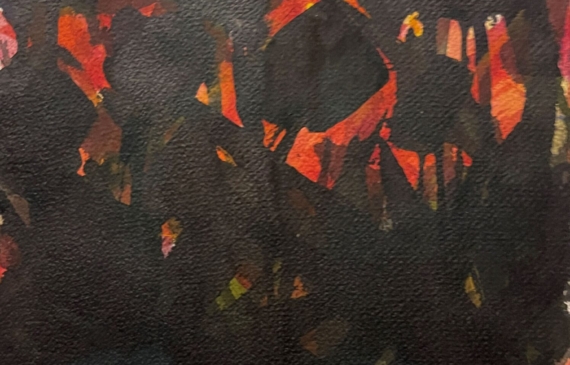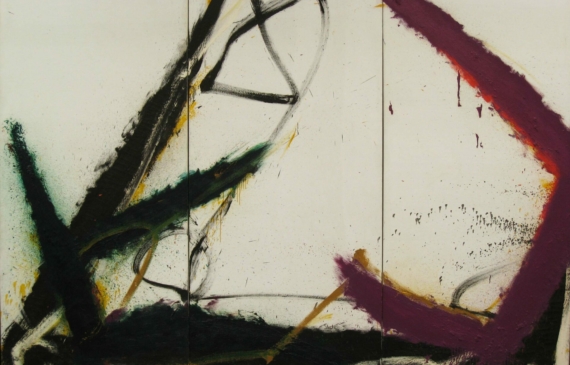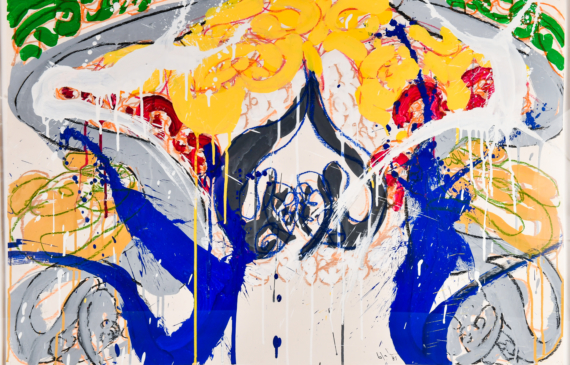

Norman Bluhm (American, 1921-1999)
Untitled, 1955
Watercolor on paper, 22 ½ H. x 30 ⅝ W. inches
Signed and dated on reverse: Bluhm ’55

Norman Bluhm (American, 1921-1999)
Untitled (Red and Black), ca. 1955
Watercolor on paper
9 ½ H. x 7 ½ W. inches
Signed on the reverse: N. Bluhm

Norman Bluhm (American, 1921-1999)
Himalayas, 1966
Oil on canvas (triptych)
72 H. x 107 ⅝ W. inches
Signed and dated lower left; signed titled and dated verso

Norman Bluhm was born on March 28, 1921 on the South Side of Chicago and graduated with distinction from high school at the age of 16. He became Mies van der Rohe’s youngest student at the Armour (now Illinois) Institute of Technology. For the next three years, Bluhm was rigorously trained in the Bauhaus approach to modern architecture. He spent long hours at the drafting table, making meticulously detailed architectural drawings. In his free time he learned to fly an airplane and played semi-pro basketball. The exacting discipline of his studies coupled with his knowledge of flying and the intense physical regimen of basketball stood him in good stead as a soldier in WWII and later as an artist.
Although Bluhm was trained as an architect, he turned his focus to the visual arts once the war was over, studying in Florence and then Paris, where he resided for multiple years. Bluhm came to New York in 1956 and was a central figure in the second-generation of Abstract Expressionism. He was an integral part of the hard-drinking, hard-charging crowd who frequented the infamous Cedar Tavern, an almost mythical meeting place for New York bohemians. An important figure in the heyday of Abstract Expressionism, Bluhm enjoyed substantial critical success during his lifetime. The Metropolitan Museum of Art, the Whitney Museum of American Art and the Museum of Modern Art are just a few of the institutions that possess his work within their collections. Bluhm found greater comfort in the practice of painting than in any fame he might have achieved, or in any time spent theorizing about art.